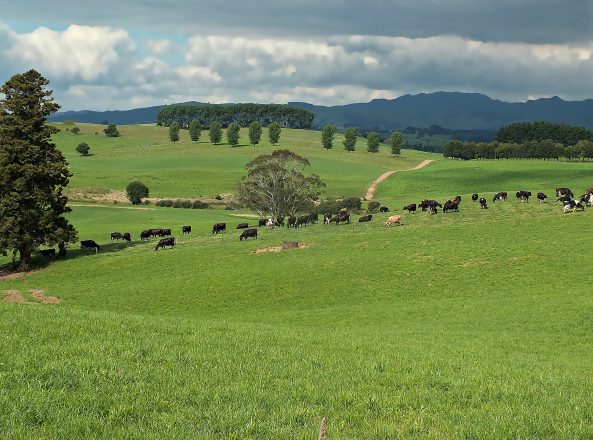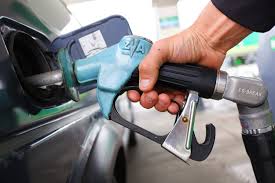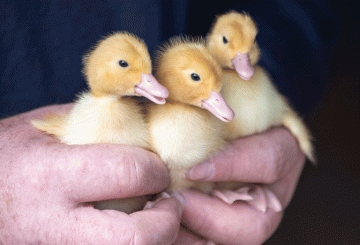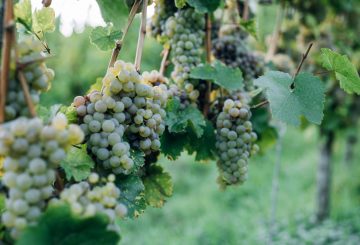Việc phát thải tại nông nghiệp nên được thanh toán như thế nào để tranh luận tại một loạt các cuộc họp được tổ chức tại tỉnh New Zealand từ tuần tới.
Năm 2019, chính phủ tuyên bố lĩnh vực này sẽ phải bắt đầu trả tiền cho lượng khí thải từ năm 2025 và ngành công nghiệp đã dành thời gian để phát triển một cách để đo lường và định giá chúng.
Quan hệ đối tác trong ngành He Waka Eke Noa – bao gồm các nhóm như NZ sữa và thịt bò và thịt cừu NZ – đã đưa ra hai lựa chọn để trả tiền cho khí thải và được thiết lập để đưa chúng cho nông dân trong roadshow trên toàn quốc bắt đầu vào tuần tới.
Theo lựa chọn đầu tiên, một nông dân sẽ trả tiền cho lượng khí thải ròng của họ ở cấp trang trại. Theo tùy chọn hai, lượng khí thải sẽ được tính ở cấp độ xử lý, dựa trên số lượng sản phẩm nhận được từ các trang trại.
Phản hồi từ roadshow sẽ giúp He Waka Eke Noa chọn một lựa chọn để trình bày cho chính phủ vào tháng Tư.
Nếu chính phủ không chấp thuận, phát thải nông nghiệp sẽ được đưa vào Chương trình Thương mại Phát thải NZ.
Với quốc gia hiện đang trong bối cảnh màu đỏ của hệ thống đèn giao thông Covid-19, một số cuộc họp đã được thay đổi thành hội thảo trên web trực tuyến và những cuộc họp khác đã bị trì hoãn một tuần.
Chủ tịch Beef and Lamb NZ Andrew Morrison cho biết vì thời gian cần thiết để điều chỉnh các sắp xếp roadshow, nó đang điều tra một phần mở rộng cho các mốc thời gian.
Chủ tịch Nông dân Liên bang Andrew Hoggard cho biết không phải là thời điểm tốt nhất để nông dân tham gia vào chương trình đường bộ vì họ đang bận rộn đảm bảo thực phẩm đã nhận được trên bàn trên khắp đất nước.
“Tôi đã viết thư cho thủ tướng yêu cầu cô ấy trì hoãn thời hạn 30 tháng tư để khu vực của chúng tôi đáp ứng các lựa chọn giá khí thải cho đến khi quốc gia trở lại trong bối cảnh đèn giao thông ‘cam’.
“Nông dân xứng đáng có một quá trình tư vấn thích hợp và cơ hội đưa ra phản hồi của họ về chủ đề này, và các cuộc thảo luận cần phải trực tiếp. Thật không công bằng và không thực tế khi thử và làm điều này trực tuyến – đặc biệt là khi internet bị chắp vá ở một số quận.”
Cũng không công bằng khi mong đợi nông dân và những người khác chuyển sang các cuộc họp khi tất cả người New Zealand đang được thúc giục giữ an toàn và tránh các sự kiện ‘lan rộng ‘tiềm năng, Hoggard nói.
Thủ tướng đã được tiếp cận để bình luận.
Nông dân mong nhận được câu trả lời
Cừu Hawarden, thịt bò và hươu nông dân Andrew Rutherford đã có một cái nhìn về hai lựa chọn và mong muốn được tham dự cuộc họp địa phương của mình.
“Tôi nghĩ giống như rất nhiều người tôi đang tìm kiếm câu trả lời, sẽ rất tốt để thử lấy đầu tôi xung quanh nó bởi vì nó thực sự phức tạp – điều chính chúng tôi muốn biết là nó sẽ có giá bao nhiêu.”
Nếu Rutherford phải chọn một lựa chọn thì đó sẽ là mức thuế tại nông nghiệp vì nó chiếm cho nông dân làm việc đang làm để bù đắp lượng khí thải.
“Chúng tôi hiểu tầm quan trọng của việc có một dấu chân thấp và những lợi ích có thể đến từ việc làm như vậy, chúng tôi bán len của chúng tôi thông qua Merino NZ, nơi sử dụng lượng khí thải carbon thấp của chúng tôi như một tích cực khi nói đến tiếp thị.
“Trang trại có rất nhiều trang bìa bản địa và bố đã tập trung vào việc trồng cây trong nhiều năm vì vậy nếu chúng ta có thể được khen thưởng cho những điều tích cực mà chúng tôi đang làm trong trang trại sẽ khuyến khích người khác làm điều tương tự.”
Lãnh đạo nông nghiệp Bắc Canterbury Winton Dalley cho biết nhiều nông dân trong khu vực đã không nhận được nhiều thông báo về quá trình He Waka Eke Noa cho đến nay nhưng ông đã khuyến khích mọi người đi cùng với một trong những cuộc họp dù trực tuyến hay trực tiếp.
“Tôi sẽ hướng đến để cho họ biết tôi nghĩ rằng họ đã sai tất cả, tôi nghĩ rằng họ đã cố gắng với thiện chí để có được một số lựa chọn tốt nhưng thực tế là cả hai đều không công bằng với nông nghiệp.
“Những gì họ đang đối phó với là các chính phủ trước đây đã khóa phát thải nông nghiệp vào Paris Accord và có lẽ khá khó để thư giãn điều đó. Nhưng thực tế là lượng khí thải từ chăn nuôi và sự cô lập carbon trong trang trại không được tính chính xác và công bằng, đó là vấn đề lớn.”
Dalley nói rằng anh rất thích quay lại đồng hồ và bắt đầu quá trình một lần nữa.
“Thực dụng, chúng tôi sẽ không có một bộ trưởng hoặc chính phủ sẽ làm điều đó vào thời điểm này vì vậy tôi đoán mọi người sẽ bị buộc phải lựa chọn giữa các lựa chọn,” ông nói.
Nông dân đã phạm tội không tham gia vào quá trình này vì nhiều người không cảm thấy họ có chuyên môn hoặc hiểu khoa học, ông nói.
“Nhưng điều quan trọng là những người đứng đầu đến các cuộc họp để hiểu rõ hơn và đặt câu hỏi.”






























































